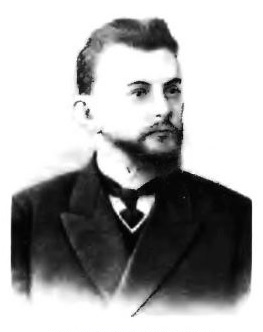
Christiaan Hendrik Persoon was a German mycologist who made additions to Linnaeus' mushroom taxonomy.

Sir James Edward Smith was an English botanist and founder of the Linnean Society.

Michel Adanson was an 18th-century French botanist and naturalist who traveled to Senegal to study flora and fauna. He proposed a "natural system" of taxonomy distinct from the binomial system forwarded by Linnaeus.

The Gentleman's Magazine was a monthly magazine founded in London, England, by Edward Cave in January 1731. It ran uninterrupted for almost 200 years, until 1922. It was the first to use the term magazine for a periodical. Samuel Johnson's first regular employment as a writer was with The Gentleman's Magazine.

Species Plantarum is a book by Carl Linnaeus, originally published in 1753, which lists every species of plant known at the time, classified into genera. It is the first work to consistently apply binomial names and was the starting point for the naming of plants.

The Botanical Magazine; or Flower-Garden Displayed, is an illustrated publication which began in 1787. The longest running botanical magazine, it is widely referred to by the subsequent name Curtis's Botanical Magazine.
Charles Louis L'Héritier de Brutelle was an 18th-century French botanist and civil servant. Born into an affluent upper-class Parisian family, connections with the French Royal Court secured him the position of Superintendent of Parisian Waters and Forests at the age of twenty-six. In this capacity, L'Héritier conducted various studies of native trees and shrubs, also gaining interest in exotic flora. The standard author abbreviation L'Hér. is used to indicate this person as the author when citing a botanical name. The abbreviation L'Herit. is also used.
Patrick Browne (1720–1790) was an Irish physician and botanist.

Samuel Frederick Gray was a British botanist, mycologist, and pharmacologist. He was the father of the zoologists John Edward Gray and George Robert Gray.
Mark Wayne Chase is a US-born British botanist. He is noted for work in plant classification and evolution, and one of the instigators of the Angiosperm Phylogeny Group-classification for flowering plants which is partly based on DNA studies. In particular he has researched orchids, and currently investigates ploidy and hybridization in Nicotiana.
Andrew James Henderson is a palm-systematist and Curator of the Institute of Systematic Botany at the New York Botanical Garden. He has authored taxonomic descriptions of 140 species, subspecies and varieties of plants, especially in the palm family
Alfred Barton Rendle FRS was an English botanist.

George Edward Post (1838–1909) was an American surgeon, academic and botanist.

Aleksandr Vasiljevich Fomin (1869-1935) was a botanist. He studied ferns and seed plants. He was also a director of the Kiev University Botanical Garden; which was renamed after him, when he died. He was a subject of the Russian Empire and later the Soviet Union.

Boris Alexeevich Fedtschenko was a Russian plant pathologist and botanist. He is primarily known for his work on various regions of Russia, especially the Caucasus, Siberia and Asiatic Russia. He was also head botanist at the Saint Petersburg Botanical Garden.
George Hill Mathewson Lawrence was an American botanist, writer and professor of botany who helped establish the 'Liberty Hyde Bailey Hortorium', the Hunt Botanical Library and the Huntia journal. He was also an avid book collector, including books on the history of Rhode Island, historic books and botanical art.

The Flora Antarctica, or formally and correctly The Botany of the Antarctic Voyage of H.M. Discovery Ships Erebus and Terror in the years 1839–1843, under the Command of Captain Sir James Clark Ross, is a description of the many plants discovered on the Ross expedition, which visited islands off the coast of the Antarctic continent, with a summary of the expedition itself, written by the British botanist Joseph Dalton Hooker and published in parts between 1844 and 1859 by Reeve Brothers in London. Hooker sailed on HMS Erebus as assistant surgeon.
The Hunt Institute for Botanical Documentation (HIBD), dedicated as the Rachel McMasters Miller Hunt Botanical Library in 1961, is a research division of Carnegie Mellon University.

Michael Jeffrey Balick is an American ethnobotanist, economic botanist, and pharmacognosist, known as a leading expert on medicinal and toxic plants, biocultural conservation and the plant family Arecaceae (palms).
Roberta Cowing Throckmorton was an American artist, employed by the U.S. Department of Agriculture (USDA).











